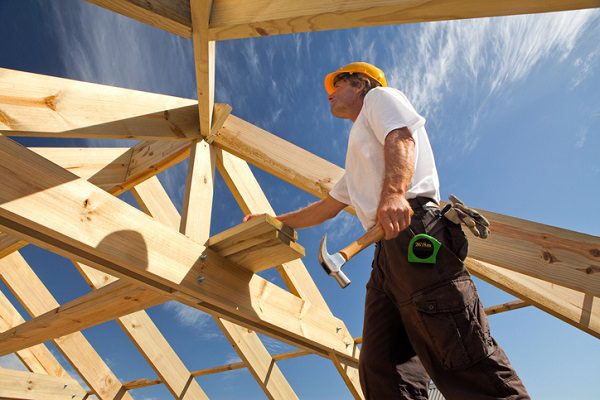Over the past year or so, builder confidence has soared. In November 2020, it reached a peak of 90 (out of 100, with anything over 50 representing overall positive sentiment). But recently, the NAHB/Wells Fargo Housing Market Index (HMI) noted a downward trend in builder confidence. Let’s look at what’s driving it, how you might respond to the challenges driving it, and things to look forward to.
Where does builder confidence stand?
In July 2021, builder confidence—as measured by HMI—rested at 80. That’s still higher than at any point prior to September 2020, going all the way back to 1985!
So, when we talk about the decline of builder confidence going forward, it’s important to consider the context. Since November 2020, builder confidence has been at historic highs. It’s little wonder that sentiment would start ticking downward.
However, there are specific causes outside of simple normalization for the slow, steady decline.
What’s driving the downward trend in builder confidence?
Generally, there are three major drivers pushing builder confidence lower.
- Extremely high prices of materials caused by supply shortages
- Labor shortages
- Consistent demand from prospective buyers
Perhaps the most well-known problem is the high price of materials caused by supply shortages. It’s true (and relieving) that lumber prices have begun to fall. In fact, as of this writing, 1,000 board feet cost under $600—which, though still historically high, is well off the pace just earlier this year of nearly $1,700. However, the prices of things like oriented strand board, copper, and brass are still extremely high.
Labor shortages are another obstacle. There simply aren’t enough skilled workers to keep up with demand. And those challenges are even worse for subcontractors.
Finally, huge demand among prospective buyers plays a role in lower confidence. Materials are expensive, labor is scarce, and demand is STILL extremely high. These aspects have forced builders to slow down in the face of burgeoning demand, which could affect sales in the longer term.
What can you do and what’s there to look forward to?
Despite these challenges, there are some things you can do and look forward to.
Most obviously, falling lumber prices should begin to give builders a little breathing room. While it won’t solve the affordability crisis alone, every little step can help. With fewer extreme fluctuations, you’ll likely be better positioned to more accurately predict how much one of your homes will cost. That can reduce some of the price uncertainty builders and buyers currently face.
The labor shortage is a much, much tougher nut to crack. It’s likely that the solution will require a renewed focus on training more women, veterans, and at-risk youth to address the shortage. Additionally, it’ll likely require efforts to recast how people, especially younger people, in the US generally view the trades.
Finally, there’s a good chance that overwhelming demand will eventually wane. As the prices of materials start to fall, it’ll be more realistic for builders to complete homes. That may contribute to greater inventory.
Grow your confidence—despite market conditions—with 2-10 HBW
Despite challenges, there’s still a lot to be confident about as a home builder. Better yet, you can increase your personal confidence by partnering with 2-10 Home Buyers Warranty (2-10 HBW).
Prospective buyers need more assurance than ever before, given high housing prices and constant bidding wars. You can provide assurance in the quality of your homes by covering them with the industry’s leading structural warranty. When buyers have confidence, it can improve your bottom line.
Learn how you can protect your business and add valuable selling points to your new builds with a 2-10 HBW structural warranty.
Related content
How a Structural Warranty Builds Trust With Prospects








